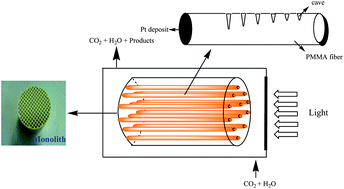Photocatalytic CO2reduction using an internally illuminated monolith photoreactor
Abstract
One of the promising solutions to both global climate warming and increasing energy demands is artificial photosynthesis, which can be implemented via the photoreduction of CO2 to produce


 Please wait while we load your content...
Please wait while we load your content...